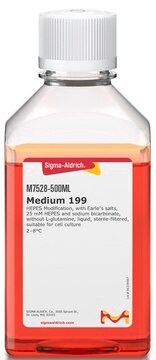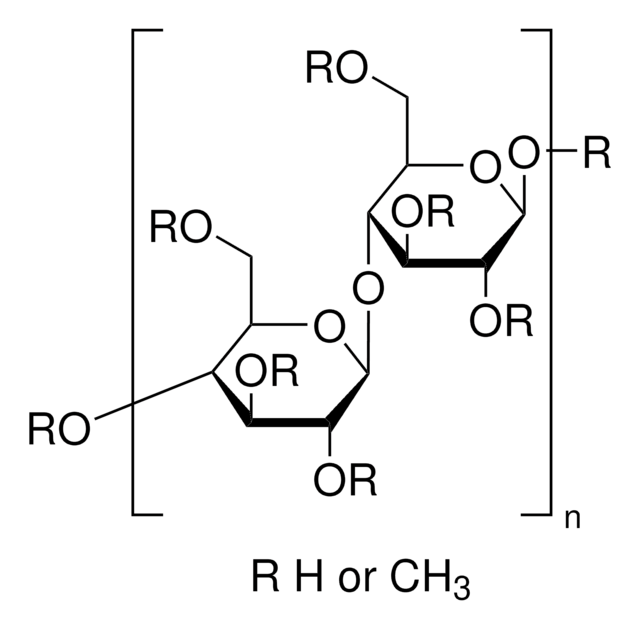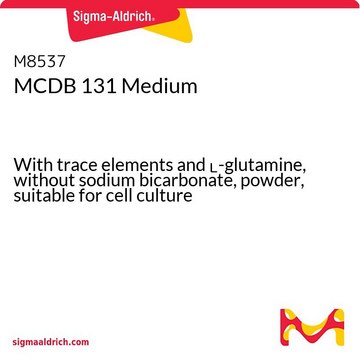M0650
Medium 199
With Earle′s salts, without ʟ-glutamine and sodium bicarbonate, liquid, sterile-filtered, suitable for cell culture, 10X
Synonym(s):
Cell growth medium, M199 Medium, TCM 199
About This Item
Recommended Products
Product Name
Medium 199, 10 ×, With Earle′s salts, without L-glutamine and sodium bicarbonate, liquid, sterile-filtered, suitable for cell culture
Quality Level
sterility
sterile-filtered
form
liquid
concentration
10 ×
technique(s)
cell culture | mammalian: suitable
impurities
endotoxin, tested
components
NaHCO3: no
phenol red: yes
sodium pyruvate: no
HEPES: no
Earle’s salts (5% CO2): yes
L-glutamine: no
shipped in
ambient
storage temp.
2-8°C
Looking for similar products? Visit Product Comparison Guide
General description
Application
- to culture human mesothelial cells
- as a component of the holding medium for the collection of embryos from pluriparous Boer goat
- in the preparation of spheroid-embedded collagen matrices
Reconstitution
also commonly purchased with this product
supplement
Storage Class Code
12 - Non Combustible Liquids
WGK
WGK 2
Flash Point(F)
Not applicable
Flash Point(C)
Not applicable
Regulatory Listings
Regulatory Listings are mainly provided for chemical products. Only limited information can be provided here for non-chemical products. No entry means none of the components are listed. It is the user’s obligation to ensure the safe and legal use of the product.
JAN Code
M0650-100ML:
M0650-500ML:
M0650-VAR:
M0650-BULK:
Choose from one of the most recent versions:
Already Own This Product?
Find documentation for the products that you have recently purchased in the Document Library.
Customers Also Viewed
Our team of scientists has experience in all areas of research including Life Science, Material Science, Chemical Synthesis, Chromatography, Analytical and many others.
Contact Technical Service









